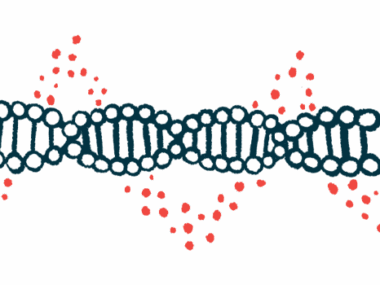Cancer, swallowing, feeding issues more common in severe RDEB
Researchers gathered information on the disease forms' natural history
Written by |

People with severe recessive dystrophic epidermolysis bullosa (RDEB) are more likely to develop disease-related complications, and at a younger age, than those with milder or more localized disease types, a U.K. study suggests.
Complications include skin cancer, swallowing and feeding difficulties, with patients commonly needing procedures to improve feeding and hand surgery for contracture release.
The study demonstrates “that it is possible to prognosticate about anticipated complications and events relevant to individuals living with EB and to their healthcare teams,” wrote the researchers, who said their findings may also “help inform endpoints for future clinical trials or surveillance of new therapies.” The study, “Milestone events in recessive dystrophic epidermolysis bullosa: findings of the PEBLES study,” was published in Clinical and Experimental Dermatology.
Dystrophic epidermolysis bullosa, or DEB, is caused by mutations in the COL7A1 gene that impair the production or function of type VII collagen, a protein that connects the layers of the skin. In RDEB, patients must inherit two faulty gene copies to develop the disease, which can cause widespread blistering and chronic wounds, and affect the internal organs, leading to complications such as hand contractures, that is, hardening of the skin, causing the fingers to curl inward, and difficulty swallowing, or dysphagia. Patients also have a higher risk of squamous cell carcinoma (SCC), a type of skin cancer.
Learning more about complications in RDEB
“However, there are few robust data about the onset and progress of these complications in the different types of RDEB, in which severity and [symptoms] can vary significantly,” wrote researchers in the U.K. who conducted a register study, called Prospective Epidermolysis Bullosa Longitudinal Evaluation Study (PEBLES), to collect information on the natural history of different forms of RDEB.
The study included 62 patients, mainly women (55%), white (84%), and older than 18 (76%). Twenty-six of them had severe RDEB (RDEB-S), 22 had intermediate RDEB (RDEB-I), nine had RDEB inversa (RDEB-Inv), four had pruriginosa RDEB (RDEB-Pru), and one had pretibial RDEB (RDEB-PT). RDEB-S is associated with more severe symptoms, with patients often having no collagen VII, whereas RDEB-I is a milder form where collagen VII is still present. In RDEB-Inv, skin damage is less widespread, while RDEB-Pru is an uncommon disease form marked by severe itching and secondary skin damage caused by scratching. RDEB-PT is rare and mainly affects the lower legs.
Dysphagia was present in 85% of the patients, including all with RDEB-S and RDEB-Inv, and at least half of those with the remaining RDEB types. Also, 69% of the participants (92% of those with RDEB-S) had at least one esophageal dilatation procedure, which is intended to widen the tube that passes food to the stomach to aid swallowing.
A gastrostomy tube to deliver food directly to the stomach was needed in less than a quarter of the patients overall, but was performed in nearly half (46%) of those with RDEB-S. Hand surgery for contracture release was more common in RDEB-S patients than in the overall patient group (58% vs. 34%).
A first instance of SCC was also more common in patients with severe RDEB (35%), but was reported in RDEB-Pru (25%) and RDEB-I (14%).
Nearly all disease-related complications were reported at an earlier age in patients with RDEB-S than the overall group, with the onset of dysphagia, the first esophageal dilatation, and the first gastrostomy tube insertion occurring by age 10. RDEB-S patients also had their first hand surgery and the first instance of SCC at a younger age than the overall group.
Seven patients died over the 10-year study. Six had severe RDEB and one had RDEB-I. RDEB-S patients died at a median age of 36, while the RDEB-I patient died at age 61. The causes of death included SCC metastasis, or spreading to other tissues or organs, sepsis (a type of generalized infection), and complications related to restarting feeding.
This study “highlights the prevalence and timing of important complications, which have a direct bearing on an individual’s clinical course throughout life,” the researchers wrote.






